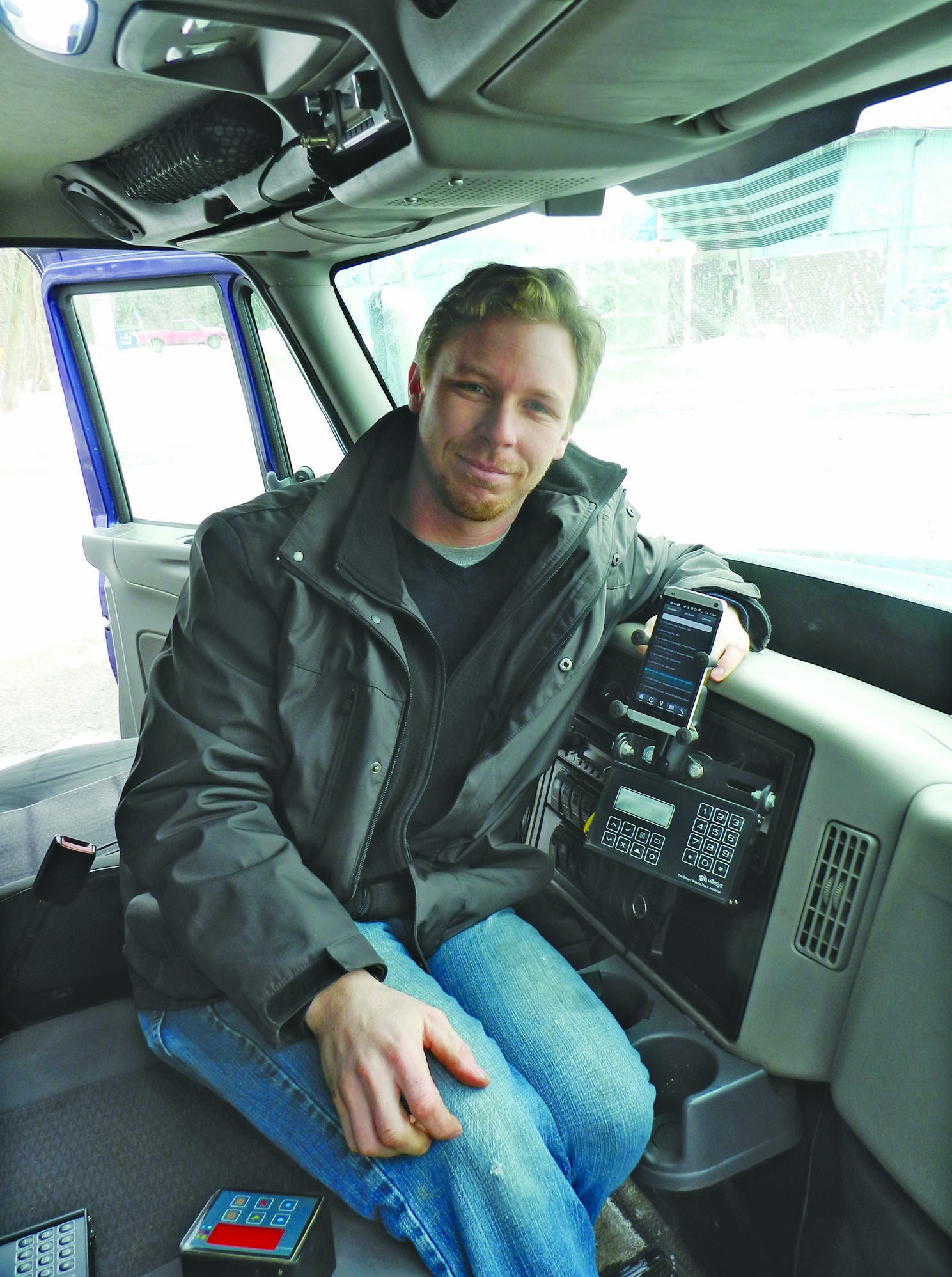

For News Tips & Advertising call...
Kitchener East - 519-578-8228
Kitchener West - 519-394-0335
University of Waterloo at the forefront of research into the use of salt

by Irene Adeney
For the Kitchener Citizen
February 11, 2016
Two factors are driving research into the use of salt to melt snow and ice. The first is environmental concern over the contamination of groundwater drinking sources, and the second is the increasing number of court cases over injuries from slip and fall accidents.
Contractors who provide snow removal are always concerned about potential slip and fall accidents. This motivates them to make sure they are using salt effectively.
William “BJ” Jordan, owner of Urban Meadows Property Maintenance Group, is actively involved with research into the use of salt.
Jordan began presenting data on snow and ice removal in 2008, shortly after joining the Smart About Salt Council (SAS), a non-profit organization based in Waterloo that is concerned about the amount of salt returning to the natural water systems.
“In Waterloo Region, most of our drinking water comes from the ground, so we are trying to protect it from contamination,” said Jordan. “Some underground wells near major shopping malls in Waterloo Region have been contaminated by parking lot salt, and cannot be used for drinking water. That’s what the region is trying to protect.”
Sixty percent of the salt seeping into the water
systems comes from road surfaces.
The SAS follows The Code of Practice for the Environmental Management of Road Salts, which is included in the Canadian Environmental Protection Act. The Code is designed to help municipalities and other road authorities better manage their use of road salts in a way that reduces the impact on the environment while maintaining road safety.
Shortly after joining SAS, Jordan was elected chair of the Snow And Ice Commodities Group, a division of Landscape Ontario. He also joined the Snow and Ice Management Association (SIMA), an American based group with 1,700 members across North America. A goal of the groups is to establish standards and regulations for the application of salt. In Ontario, there are none.
“Eventually, salt will be regulated,” says Jordan. “But today in Ontario, there are no regulations governing the use of salt.” The amount of salt applied factors into liability when slip and fall injuries end up in court.
“In court, there is no way for contractors to defend themselves,” explains Jordan. “So, insurance rates skyrocket. Thirty years ago, people wore boots and treaded carefully on slippery surfaces. Today that isn’t necessarily the case. Society no longer expects to walk on a snow-covered sidewalk or roadway. That’s why all of this [research] started.” The trouble is, salt is the most economical substance for removing snow and ice.
In 2010, a partnership was formed between several agencies and companies, and funds were raised to contract the University of Waterloo to begin a multi-year research project through its Civil and Environmental Engineering Department. The project began in 2011 and was named SICOPS (Snow and Ice Control for Parking Lots, Platforms and Sidewalks). According to the SICOPS website, “The primary goal of this project is to address the common question that faces every winter maintenance contractor: what are the right snow and ice control methods.”
SICOPS is looking into the way snow and ice is removed, including increasing the use of more environmentally-friendly materials, such as diluted beet juice.
“We [Urban Meadows] were one of the participating contractors,” said Jordan. “We tracked the amount of salt we used by weighing it, and this provided data for Raqib Omer, a native of Pakistan, the lead research student.”
“When the research started at the University of Waterloo, most of the students had never seen snow before,” said Jordan with a smile. Eleven local contractors took part in the research.
In 2012, with the co-operation of two customers in North Dumfries, Urban Meadows sectioned off two large parking lots and experimented with the application salt and other test materials to remove snow and ice. Cameras were installed to monitor the results.
“All of the contractors taking part supplied data points to the researchers who then teamed up with SIMA and Landscape Ontario to verify these data points with contractors right across North America.”
“Raqib always had to wait for contractors to relay back the amount of salt they used, but it was a guess at best on the amount they used. This is why Raqib came up with the concept of his salt tracking system called Viaesys. It was able to track and report the salt application using a smartphone application that would transfer the data from the field to an online system. This was the turning point in the research, because data could be collected easily and accurately.” Urban Meadows trucks tested the prototype for the first Viaesys salt meter.
“It’s easy to use. There are two magnets attached to the auger and sensors count the number of revolutions and the amount of salt distributed per revolution. We worked with Raqib to decide where the sensors should be mounted for maximum safety and efficiency.”
Today, SICOPS continues on with the research and Raqib has left the university. He has formed his own company to manufacture and market the salt meters. And the development of the meter hasn’t stopped, a third generation of the meter was recently tested by Jordan.
“The work that we are doing now will be the norm in 10 years,” says Jordan. “The awareness about salt usage is coming about now, through the university research and the push by SAS and SIMA.”
“We live in Canada where snow and ice are a fact of life, but we are the only industry held accountable by Mother Nature,” Jordan says.
The work of Jordan and the agencies is paying off. Since 2008, the use of salt has decreased by 40%.
William Jordan of Urban Meadows Maintenance Group holds the smart phone that tracks the amount of salt his truck distributes.